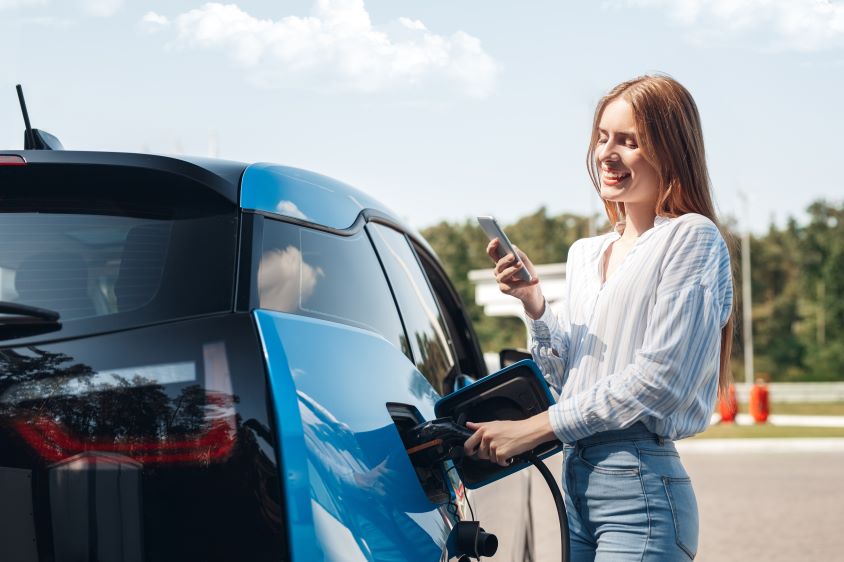Are Electric Cars Safe?
Written by: Simon Pavey, Last updated:30th November 2023

In the past, there has been a lot of superstition towards the safety of electric vehicles. A few viral videos of an electric vehicle catching fire circulated the internet, and their overall safety was questioned. With any new and developing technology, it is wise to remain wary however with safety always at the forefront of the design and manufacturing of vehicles, electric vehicle safety is little cause for concern.
For any potential buyers who see safety as a barrier to purchasing an electric vehicle, let’s look at some of the reasons why safety is not something you should be worried about.
Are electric car fires common?
While it’s definitely a possibility for electric vehicles to catch fire, it’s even more possible for a vehicle using a combustion engine to catch fire.
In a 2014 study, the Research Institutes of Sweden concluded that whilst electric cars made by Tesla had a fire rate of 1 in 20,000, the fire rate in ICE vehicles was 1 in 1,000.
Simply put, a Tesla electric car is 20 times less likely to catch fire than a fossil fuel burning vehicle.
What is being done to prevent electric vehicle fires?
Safety is a huge priority for manufacturers when building an electric vehicle.
Batteries are very well protected in crash resistant frames. They are also mounted as low as possible, and away from areas likely to be crumpled in a heavy impact. This is all to stop any material piercing the battery, which is where issues might start.
If a cell within the battery does get damaged, it could short circuit and cause flammable electrolytes to ignite. This can cause a chain reaction, causing large, sometimes inextinguishable fires. You can see why the safety of each electric vehicle is of high importance to manufacturers.
Electric vehicles are also fitted with sensors that detect collision. When this happens, any high voltage connections are severed. This greatly reduces the risk of the vehicle catching fire after an accident.
Electric vehicles fitted with noise emitters
Another concern regarding the safety of electric vehicles is that they don’t naturally emit much noise. Whilst this sounds a lot less frightening than the chance of the battery catching fire, it could be just as dangerous.
We are used to hearing cars – we know they are there and which direction they are coming from. We wouldn’t cross the road without looking if we could hear a car behind us.
The obvious issue with electric vehicles is that if pedestrians can’t hear them coming, they could unknowingly put themselves in harm’s way.
Luckily, guidelines in the UK dictate that electric vehicles must contain an acoustic vehicle alert system (AVAS). The legislation means that cars must emit a sound with a minimum volume of 56 decibels. This is about the same volume as a quiet conversation. On a quiet street, the AVAS is enough to make pedestrians aware of the vehicle’s presence.
As of 2021, all new electric cars must have AVAS fitted. Hopefully, concerns about low noise levels will be a thing of the past by the time we get to the 2030 ban on petrol and diesel production.
What happens to electric car batteries in a crash?
Batteries can be volatile, so it’s understandable that there might be some concern over how electric cars will react in the unfortunate event of a crash. While an electric car battery could explode or ignite in the case of a crash, electric vehicles undergo the same rigorous safety testing as combustion engine vehicles, and are just as safe in a collision.
Modern electric cars feature a host of safety measures to prevent the ignition of batteries during a crash such as sensors, circuit breaks, and other system features designed to detect potential damage before it happens.
Additionally, since hot batteries are more likely to explode, these vehicles utilise a range of different cooling systems to keep the battery temperature as low as possible. This further reduces the risk of any further disaster should a collision occur.
How to ensure safety on the road
Whilst we can compare the safety of electric vehicles and ICE vehicles, the overall safety of any vehicle is determined by the driver.
Continuing to drive with 100% focus on the road is the simplest, most effective way to avoid any accidents that could cause fires. Keep distractions out of reach, and always be aware of other motorists.
For fleet managers, using telematics allows you to monitor whether your drivers are being safe. You’ll be able to see which of your drivers are prone to speeding, aggressive turns and breaking, tailgating and other erratic habits. Any action taken with this information is down to the fleet manager, but teaching drivers to avoid these habits will make the roads safer for everyone.
From 2022, all new cars will be fitted with speed limiters in Europe and the UK. The technology can be disabled for overtaking and joining motorways, but data will also be stored so that, in the case of an accident, police can determine whether the driver was at fault.
If you’d like to know more about how telematics can improve your fleet’s safety, get in touch with our team.
back



